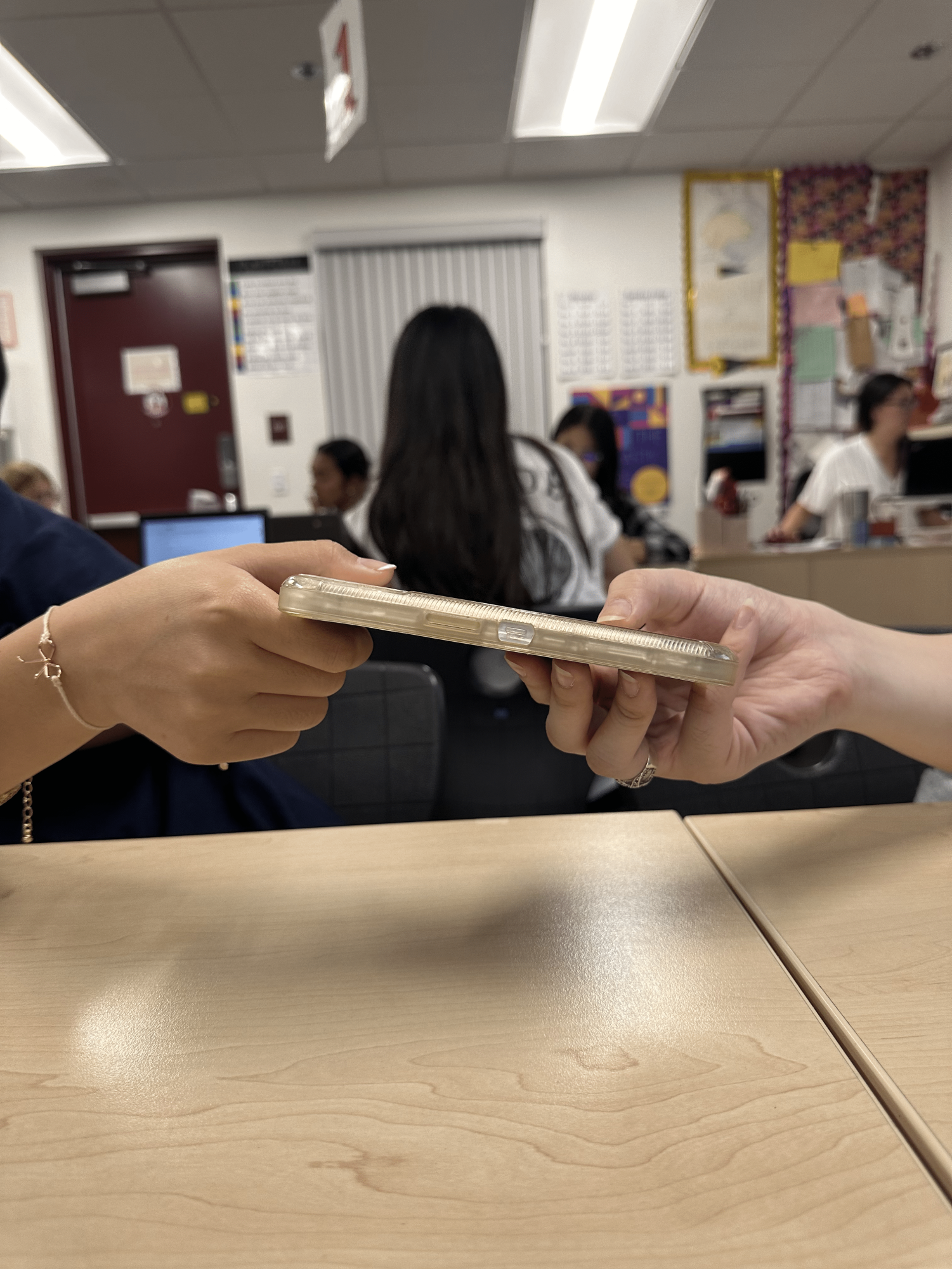Cellphones in school have been the topic of much debate and issue amongst students, teachers, faculty, and even higher-ups in the district. The argument that there is a time and place for phone usage continues to grow as more and more issues begin to arise. At this point in time, the biggest question on everyone’s mind is what measures high schools and the district will take, and how drastic will they be?
Ayala’s efforts to try and lessen phone usage in class have been aimed toward letting the teachers mediate and set their own class rules regarding the phone issue. Though they all have to follow the rules of no phones during class time, each teacher has their own view to the extent of how phones should be allowed within the classroom.
“Students can take pictures of things underneath a microscope to study different sorts of histological imaging, they could record themselves making videos about engaging with bone structures and other bone models that way they can help with memorization,” Human Anatomy and Physiology teacher Mr. Lynus Vuong said.
Teacher’s belief system in phones will always vary, as new aged teachers may have a more profound reason to believe phones work rather than the more traditional, veteran teacher. This sort of split and diversity of beliefs can prove to be another part of the issue. Whilst some may see the benefits in phones for assignments and study tools, others may have the view of using the old fashion way of talking to one another.
“What I encourage a lot more in my classes is collaboration with our peers, and when our students are not on their phones, it invites other people to like in those conversations, those academic discussions,” math teacher Mrs. Christina Kim said.
Teachers are tasked with the impossible, trying to convince hundreds of students to limit their own time on their phone whilst in class. Although the responsibility of trying to minimize cell phones in class can give the teacher some control over it, the biggest issue is having to deal with the students. It is not easy to persuade students, especially in our technological age, to give up personal devices.
“I feel like it’s very difficult to control because students are so, or they’re essentially, just very trained to go and just look at something when they get a notification,” Vuong said.
This issue then falls onto the biggest roadblock when trying to fight the cellphone issue, the students. Students, being the majority over the teachers and faculty, are what truly hinders these sorts of rules and protocols from being effective, as many see these sorts of future goals as unnecessary.
“I have to say that they’ve been really pushing down on it, and I think it’s something that shouldn’t be happening, not as much. I understand the rules and stuff, but it’s a bit overdone,” Dakota Bostek (11) said.
Student’s rights and beliefs are, of course, a top priority when it comes to these rules, which only further the tension between phone limitation and making everyone happy.
Having to satisfy everyone is the overall goal, but it only leaves the question: what should the district do? California has already rolled out an impeding ban on cell phones in school, set to take root in 2026, but what actions could our district take beforehand? Of course, the split of opinion varies, leading to many different views and responses to such actions being made that could cause an uproar amongst students, whilst being seen as a plausible solution to an overdue issue.
“I think there are baby steps that we can take to get there,” Kim said. “I don’t know what those steps are yet, but I think it’s very good to observe how other people are responding to this issue and and respond accordingly.”
The cell phone issue amongst high schools across the US is a growing problem that every school and district has been faced with, leading to some action having to be taken. At Ayala, teachers, faculty, and students have been real cautious around the matter, but at some point, there will be a real strong divide. The biggest worry isn’t what the approach will be, but how students will react and obey. Cell phones hold plenty of importance, but they also hold a sense of identity and belonging to everyone, only making the issue at hand even greater. Only time will tell how grave and how huge this problem may become, how wide the divide may grow, and how much turmoil will spew from it.








